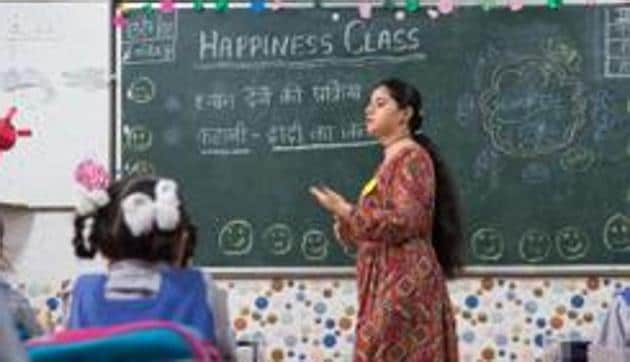The risk of girls dropping out of school in large numbers is real. The time to act, plan and stop a predictable slide is now.

In India, 320 million children have been affected by school closures caused by the coronavirus disease (Covid-19). Online classes do not factor in the country’s digital divide where 16% females have Internet access, compared to 36% males, according to the National Sample Survey 2017-18(HT Photo)
Her family has always “believed in education,” Vidhi Kumari, 18, tells me on the phone from her home in Mangolpuri, Delhi. So even though her mother never went to school and her father, a driver, studied only up to the 10th grade, four of her five sisters are graduates, one is in the 12th grade and the youngest, a brother, is in the eighth.
Even in these extraordinary times, Vidhi tries to keep up with her online BA classes. It’s not easy. “My sister and I share a phone so when she attends her class, I miss mine, and sometimes it’s the other way around.”
With only half attendance, Vidhi is one of the lucky ones. Many girls in her neighbourhood have dropped out — someone doesn’t have a phone, another has no money for recharge and someone else had to take up paid work. “This is a slum area,” says Vidhi. “There’s a lot of financial hardship here.”
In India, 320 million children have been affected by school closures caused by the coronavirus disease (Covid-19). Online classes do not factor in the country’s digital divide where 16% females have Internet access, compared to 36% males, according to the National Sample Survey 2017-18. This gap can sometimes have tragic consequences as in Kerala where a 14-year-old girl, a merit scholar, committed suicide when she couldn’t access her online classes.
Previous epidemics have taught us that it is the most vulnerable who end up bearing the heaviest burden. The 2014 Ebola crisis saw the number of out-of-school girls increase three-fold, says Safeena Husain, founder of NGO, Educate Girls, which works in 17,000 villages in Rajasthan, Madhya Pradesh and Uttar Pradesh.
“We found that the two key indicators for girls being out of school are poverty and patriarchy,” says Husain. “When the two combine, there is an exponential increase in out-of-school girls.”
The education of girls has been India’s success story, so far. Although four million are still out of school, enrolment rates across all levels went up by 25 percentage points in five years since 2013.
The virus could reverse that success. “The lockdown is burdening girls with household chores and sibling care,” says Plan India’s executive director Mohammad Asif. If these girls drop out of school, we will see a spike in early marriage, child labour and trafficking, he warns.
Containing the pandemic has taken priority. Even Educate Girls is currently focused on distributing rations. “Nobody is talking about education right now,” says Husain.
We are sitting at the edge of a looming disaster. The time to act, plan and stop a predictable slide is now.
Now is when policymakers and non-governmental organisations need to talk to the girls and map a blueprint to keep them in school. Now is the time to identify vulnerable districts, plan hostels for marginalised girls, increase scholarships, and add breakfast to mid-day meals.
Now is the time to find out what it takes to keep our girls in school.
Namita Bhandare writes on gender
The views expressed are personal